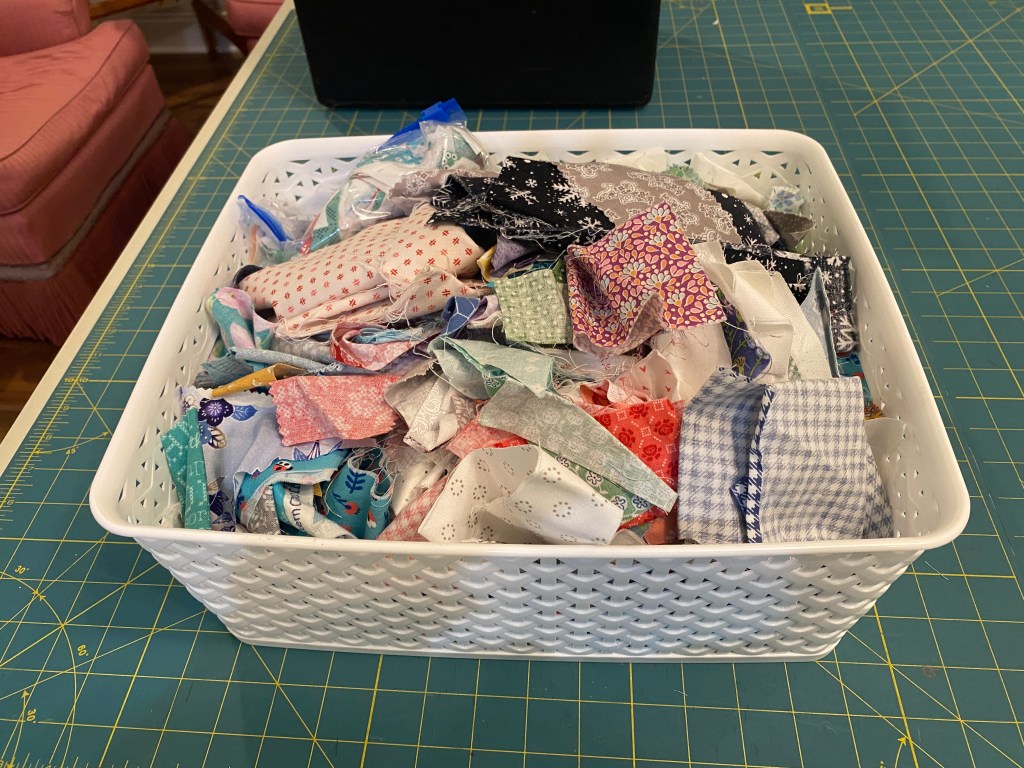New Year’s Day Stitching Fun
Today, I joined 1500+ other quilters in the Stitchin’ Heaven New Year’s Day Livestream mystery quilt-a-long. This has become a NYD tradition for me. There’s no charge to participate and the quilt shop gives away some really good prizes every 45 minutes or so. Today’s prizes were electronic gift cards with values ranging from $50 to $250.
How does it work? A cutting guide and Team Rob/Team Tiffany fabric selections are released a few weeks ahead of time in their FB group. You can order a laser cut kit in your choice of those 2 colorways or use fabrics from your stash. I opt to pull from my stash. During the livestream, each block is broken down into units. The hosts usually demo a couple of different techniques and show the audience how to use new notions. I precut enough fabric to make 2 blocks and go from there. There’s a 30 minute lunch break built into the schedule and a soup recipe is shared ahead of time. (Hint: I buy a ready made version at the grocery store).



In the past, I’ve made the blocks in a patriotic colorway (go Team Rob), which were turned into placemats to donate to Meals on Wheels. This year, Team Rob chose a colorway that I really, really liked! I mimicked the colors as closely as I could, using fabrics from my stash. Once I saw the final quilt reveal, I knew I wanted to make a 3×3 block layout with borders (finished size: 48″ square). I actually have enough fabric to make the 9 blocks and borders! Haven’t decided if this will be a donation quilt or a Sadie quilt. We’ll let her decide!
This year, my husband was actually home on New Year’s Day. Normally, he’s out helping with a community service project or away on an active operation with Team Rubicon. He thoroughly enjoyed being able to watch college football uninterrupted today. 🙂
A TV for my sewing space is on the to-do list for 2026. Perhaps, I’ll be able to host a small group here to join in next year. We shall see.


